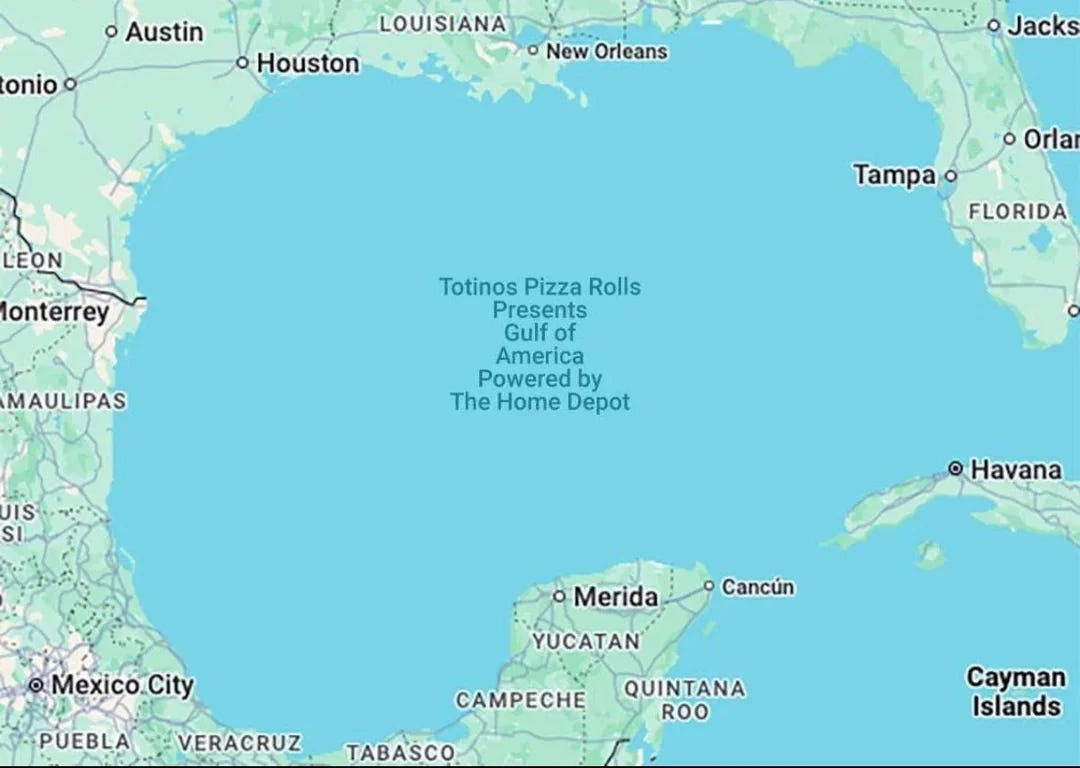American Democracy Is Fueled By Your Anger
What history can tell us about why the Left and the Right foment fury.
I’m what you might call a prodigal political observer. I avoided considering politics until I got into history and realized, to my chagrin, that history is full of current events. What a charlatan I’d be if I ignored everything happening around me in favor of my books on feudalism or Viking berserker drug use.
If you’re wondering what caused this about-face, as Harold MacMillan supposedly said, “Events, dear boy, events.”
Here I am, talking about politics and history.
I’m sorry if that offends you.
I can’t help myself.
I’ve noticed a fissure emerge in America. Maybe it’s always been there. But, to me, it seems to have widened year over year. This or that event has seemed to creep us slowly toward our doom.
I found an explanation for this growing divide in a history book, but from an unlikely source.
A pro-slavery Confederate.
I know—not the first place I’d think to find an explanation for our modern time either.
But it reminded me that nothing new exists under the sun, that human folly has ruled politics as long as politics have existed, that avarice and corruption flock to power as moths do to light.
William Lowndes Yancey was a fire-eater, a term denoting an outspoken secessionist. Yancey evangelized secession, and when Alabama seceded from the Union in 1860, Yancey drafted the secession ordinance. In the decade before the Civil War, Yancey delivered hundreds of speeches, denouncing the Union and the developing Republican Party, for fear they would disband the institution of slavery.
When he described his method, Yancey delivered the quote in which partisan theory eternal (in my estimation) is plainly described.
“All my aims and objects, are to cast before the people of the South as great a mass of wrongs committed on them, injuries and insults that have been done, as I possibly can. One thing will catch our eye here and determine our hearts; another thing elsewhere; all, united, may yet produce spirit enough to lead us forward, to call forth a Lexington, to fight a Bunker's Hill, to drive the foe from the city of our rights."
It struck me then that the strategy hasn’t changed. Stir the pot long enough and someone always shows up with a musket.
Today’s partisans don’t speak like Yancey, but they don’t need to. They’ve mastered the rhythm. They inflame. They unite. Then they turn that anger into action, not to understand, but to conquer.
I read an article earlier this year with the headline, “House passes bill that could make it harder for married women to vote.” You can imagine the many exclamation marks meant to follow the statement.
Initially intrigued, I read through the piece and was greeted by phrases like, “The U.S. House has passed a bill that voting rights groups have repeatedly warned would make it harder for millions of Americans, including married women, to vote.”
How is that possible? I wondered.
But then I kept reading. The article highlighted a phenomenon where millions of Americans don’t have access to their birth certificate. Another article on the same subject snarkily posed the question: Do you know where your birth certificate is?
I do, actually.
This was written to punctuate the argument, “What Washington politicians won’t tell you is it is already illegal for non-U.S. citizens to vote for the president and Congress. In fact, it is a federal crime—and has been since 1996—with punishment by fine and jail. A non-U.S. citizen who votes also risks deportation.”
To summarize: People who have lost their identification, or have not updated it, will find it difficult to vote under a new bill emphasizing the pre-existing law, and illegal aliens (who are not legally allowed to vote) risk deportation if they attempt to do so.
Do you see where I’m going with this?
It was as if left-leaning publications took a page from Yancey’s book of oratory and entered a public forum cloaked in a toga, wagging their pointer finger at the fools in the audience, shouting, “See! The Right doesn’t want you to vote!”
But of course, the argument is buttressed by nonsense.
Lest right-wingers get too comfortable, their political commentators and activists sing the same performative nonsensical tune.
On his inauguration day, Donald Trump signed between 15 and 20 executive orders. One of them officially renamed the Gulf of Mexico the Gulf of America. When he announced his plan in his inaugural address, Hillary Clinton couldn't help but smirk. I imagine many other Americans did as well.
Content creators took to meme-ifying the decision when Google Maps made the change. My personal favorite was this one:
Representative Marjorie Taylor-Greene submitted a bill that made the change irrevocable. Many Liberals groaned, a few Conservatives did, too.
Dem Rep. Steny Hoyer said, “Republicans think this juvenile legislation is the best use of this House's time. This is the only work we're doing today, folks.”
An anonymous conservative echoed Hoyer’s disdain when they asked, “125 other [potential executive orders], this is the one we pick?”
While the above conservative expressed fatigue, others lauded the change. Ben Shapiro wrote, “Trump is going to instruct the federal government to rename the Gulf of Mexico to the Gulf of America, and I am here for it. It is fantastic. If you look at a map, about 65% of the coastline along the Gulf of Mexico is in America. Who’s going to stop us from renaming it? Mexico? Sure. They can’t even balance the budget or stop the cartels from running their country.”
The Right took hold of this order and saw it as a sign of the forthcoming winds of change in Trump’s administration. Jonah Grieser wrote in the American Reformer, “Trump’s efforts to redefine and rename should be seen as a unified assault on the Left’s attempt to shape the world according to its perverse ideologies... The Gulf of America is not cringy. It is part of a battle the Right has long needed to fight—part of a battle for reality itself.”
If you see the name change as nonsensical, you’re on the wrong side of the battle of reality; you’re trying to shape a perverted world.
One thing will catch our eye here and determine our hearts; another thing elsewhere; all, united, may yet produce spirit enough to lead us forward…
These are but two examples among a plethora. Modern politics is a cage fight between partisans, and the victor is declared at the polls by a lackluster public fed foolishness for years on end. In sweaty back rooms, Democrats and Republicans strategise methods for snatching power. They move their pieces about the board, attempting to divine new means for their exaltation.
But there is nothing new under the sun.
Their most effective tactic is the same one Yancey wielded in the 1860s: dangle dramatized wrongs and slights before their constituents, foment outrage, and—once the people are sufficiently heated—unleash an enraged populace on the opposition.
This method, though, cannot create a Union, only division. It would be false to write that America is as divided as it has ever been, but is not the schism between conservative and liberal so wide? Is there any hope for reconciliation?
If this tactic continues, and I have little doubt it will, I suppose not.
And what do we do when the loudest voice in the room belongs to the man meant to calm it?
The president isn’t just another player in the partisan scrum. He sets the tone. He defines the field. And in Trump’s case, he’s often lit the match.
He’s directed ICE to emphasize deportations in Democratic-run cities. He’s referred to the Biden administration as “scum”. In 2021, he urged his supporters to “fight like hell” before January 6th. He’s painted illegal immigrants as “murderers, drug dealers, rapists, and gang members,” despite evidence1 to the contrary.2
These aren’t just policies. They are performances.
Like Yancey, Trump knows how to stack perceived wrongs until the crowd prickles with rage. But unlike Yancey, Trump does it from the highest office.
Another knot within this ball of yarn is that quantity seems to possess a quality all its own.
Between 1845 and 1860, Yancey delivered hundreds of speeches to varying crowds.
In addition to his hundreds of campaign speeches and presidential addresses, in the past twelve years, Donald Trump has delivered to his 100+ million followers on X more than 59,000 tweets.
Is there a solution? I confess my hands are empty; I only worry.
Democratic politics in a system like ours is fueled by self-interest. It has always been so. This natural state has both positive and negative aspects.
On the one hand, it has fostered the freest system of government in world history. On the other hand, in the 1850s and 60s, we witnessed our country torn apart by men who had a vested interest in chattel slavery, by men who had a vested interest against it.
Now, it’s being torn apart by men and women with a vested interest in your anger.
Near the end of his life, John Adams wrote a letter to his friend and sometime political rival, Thomas Jefferson. The two disagreed perhaps more often than they agreed. Their debates were heated, but their aims were righteous. Adams despaired in 1813 because he could smell tyranny and corruption on the far horizon. He knew the ingredients were baked into their toddling republic. He wrote,
“Government has never been and never can be much better than the people, enlightened and virtuous, make it... The general character of human nature is still the same as it was three or four thousand years ago.”
He despaired not because the government itself was fallible. He loved and fought viciously to protect the infant democratic republic he and other Founding Fathers had brought into being. But he despaired because the system was at the mercy of its leaders.
At 79, Adams trembled. He had seen humanity in all her avarice, corruption, and vanity.
At 27, I suppose I fear the same.
This is a note from the DOJ study, I found it intriguing, you may, too:
For the period of 2012 to 2018 in Texas, the total violent crime arrest rate was 213 per 100,000 for U.S.-born citizens and 96.2 per 100,000 for undocumented immigrants. In the same period, the total drug crime arrest rate was 337.2 per 100,000 for U.S.-born citizens and 135 per 100,000 for undocumented immigrants, and the total property crime arrest rate was 165.2 per 100,000 for U.S.-born citizens and 38.5 per 100,000 for undocumented immigrants. Michael T. Light, “Unauthorized Immigration, Crime, and Recidivism: Evidence From Texas,” Final report to the National Institute of Justice, award number 2019-R2-CX-0058, January 2024, NCJ 308552, https://www.ojp.gov/pdffiles1/nij/grants/308552.pdf, 15.
Don’t misconstrue this as support for illegal immigrants—they are here illegally, after all, and there are certainly murderers, rapists, and gang members among the many millions of illegal immigrants within our borders. But our leader paints that minority as the majority.






